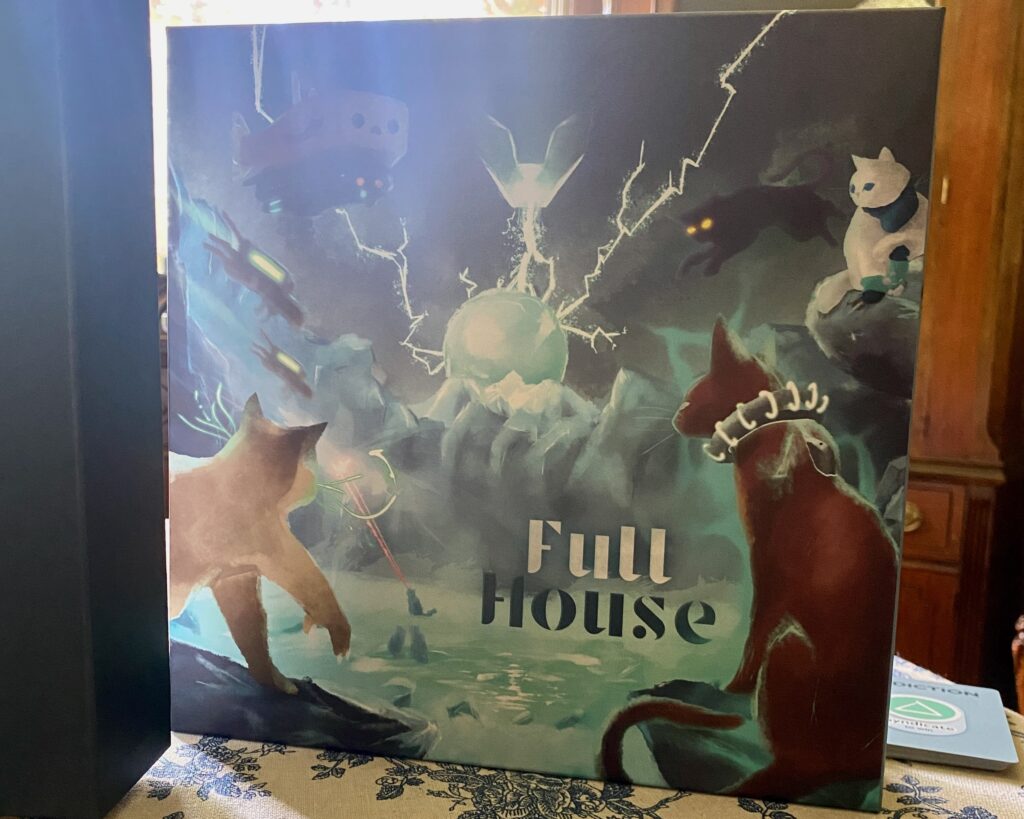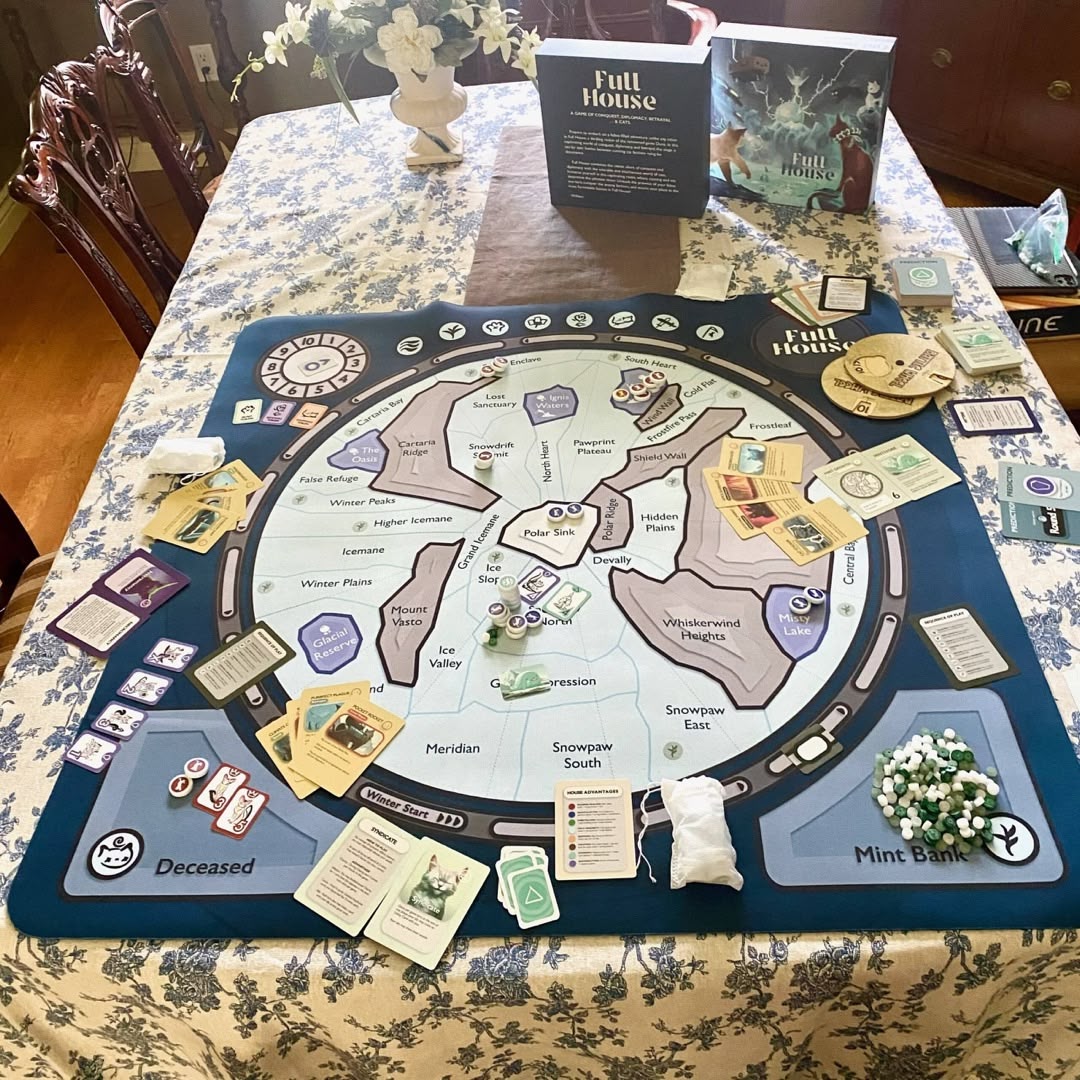Full House – An Asymmetrical Strategy Game
Section 1 — Overview
The passion project that opened my eyes to the world of game design.

Full House is a board game for 2-9 players that I created in June of 2023. Heavily inspired by the popular game Dune by Gale Force 9, I made significant adaptations to streamline the gameplay, accommodate larger groups (up to 9 players), and merge the basic and advanced rules into a cohesive experience.
Over the course of 3-4 months, I designed, balanced, and illustrated the entire game myself, including all graphics and mechanics. Full House offers a strategic mix of faction-based competition and cooperative alliances, pushing players to outwit and outmaneuver each other for control of the planet’s hotlakes.
The main objective is to become the most powerful House by occupying at least three hotlake territories, or as part of an alliance by holding four. The game is driven by phases that involve bidding, battles, alliances, and resource management, offering players a rich and strategic experience.
Section 2 — Game Highlights
Factions: Nine unique factions, each with distinct advantages and characteristics, inspired by those from Dune but completely reimagined in the Full House universe.
Custom Rules: I combined Dune’s basic and advanced rule sets to simplify and enhance the gameplay. Key mechanics like resource bidding, alliances, and battle resolution have been fine-tuned for more fluid, balanced play.
Player Count: Full House accommodates up to 9 players, with the ideal experience being 7-8 players. The game includes custom rules for 8-player scenarios, ensuring smooth gameplay with larger groups.
Playtesting: Extensive playtesting with 8 players helped refine the balance and dynamics of the game, making it a more accessible and enjoyable experience.
Section 3 — Development Process
Full House began as a modification of Dune but quickly grew into its own distinct game. Over the months, I refined the mechanics to make it more adaptable and engaging for larger player groups, while also designing all of the game’s art, components, and layout. Working with Board Games Maker, I printed high-quality game boards and pieces to bring my vision to life. This journey into game design not only challenged my strategic thinking but also tested my skills in balancing complexity with playability.
Section 4 — Game Mechanics
Unique Mechanics
Systems that offer a highly replayable gaming experience.
Faction-Specific Strategies
Each faction has its own unique advantages, each granting the player power over a crucial mechanic of the game (i.e. economy, weapons, revival, etc.).
Dynamic Alliances
Nexus and anti-nexus events allow alliances to form and break, adding depth to player interactions.
Intentioned Randomness
All randomized events or hidden information are known to at least one player in the game. This leads to more meaningful decision-making and opportunities for player interaction.
Battle Mechanics
Secret battle plans using dials and utility cards, influenced by leaders and spies, make each encounter intense and strategic.
Section 5 — Components
Game Mat: A custom-designed map of Dyosmogene, featuring various terrain types (Snow, Rock, Hotlakes, Polar Sink) and mint growth locations.
Faction Components: Player faction cards, leader cards, custom tokens, and a detailed set of unique utilities for each faction.
Cards: Including Mint Deck, Utility Deck, Spy Deck, and more, which add elements of strategy, resource collection, and combat options.
Section 6 — Future Prospects
I hope to one day have Full House published and distributed. This game has been incredibly well-received during playtesting, and I believe its design, gameplay, and player count flexibility give it the potential to stand out in the tabletop community.
If you are interested in learning more, please check out the complete rulebook below.
